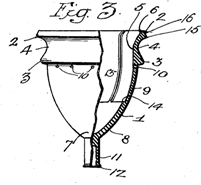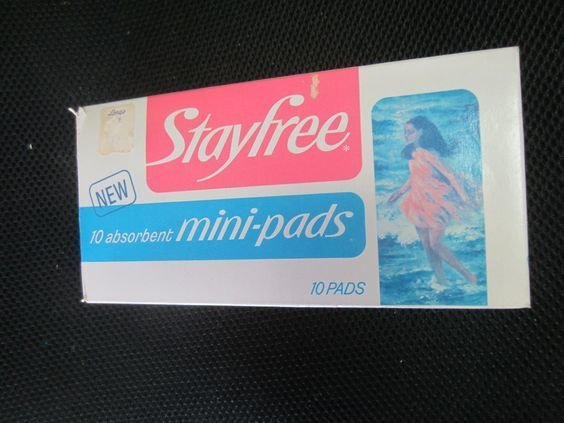Menstruation is our body's way of expressing that it's MOST DISAPPOINTED we're not pregnant.
Since the beginning of time, people with periods have resorted to desperate measures to plug our proverbial Hoover Dams: rock salt, opium, and elephant dung have all (unfortunately) been used.
The Magical Mystery Tour of Menstruation has made many stops in the last 100 years alone. We've gone from sad period bloomers to the cotton rockets we know and love today.
As menstrual products multiply, so does our understanding of who actually menstruates. It's a common misunderstanding that only women bleed; in reality, people of many gender identities can (and do) get monthly visits from Aunt Flo.
Here are just some of the ways we've surfed the crimson tide:
Early 1900s — Homemade pads

Back then, everyone was "on the rag" — literally.
Menstruators had the unfortunate task of pinning cotton rags to their underpants. They would simply wash the towels after use and save them for next time.
1911 — Midol invented

In the year of 1911, our lord and savior Midol, finally hit shelves.
At first, the medicine was marketed as a pill for headache or toothache relief. But over time, period-havers began using it to relieve menstrual cramps.
1920s — Kotex disposable sanitary napkins (and belts)

WWI nurses used Curad bandages on soldiers, but quickly realized the material could effectively absorb menstrual blood.
Kotex started selling these pads, which were pretty advanced because they were disposable. However, they had to be worn with a "sanitary belt" that looked like a Medieval torture device.
1931 — Tampax Tampons

After thousands of years of shoving questionable materials in our pussies, in 1931, the Tampax cotton tampon hit shelves.
"The initial discovery of the telescoping cardboard 'applicator tampon' was developed and patented by the Colorado doctor Earl Haas in 1931," Bustle's JR Thorpe explained. "But it was a woman, Gertrude Tendrich, who bought the patent and started to produce it, expanding from sewing tampons at home to distributing them under the now-famous brand name Tampax."
1937 — First menstrual cup invented

Bye bye, sanitary belts!
Leona Chalmer's rubber menstrual cup gave period-havers a more covert, convenient alternative to the painful rags of yore. Though the product didn't exactly skyrocket in sales, in recent years, menstrual cups have had a renaissance.
1969 — Stayfree Mini-Pads

These pads *literally* freed menstruators from the burden of pinning rags to their underwear. These mini pads came with the adhesive strips like the ones we see on pads today.
1990s — Interlabial "Padettes"

In the late '90s, companies started experimenting with interlabial absorption devices, which sound like mind control devices, and pretty much sucked.
Here's how they were supposed to work, according to one patent:
"When folded along the axis and inserted into the wearer's interlabial space, the topsheet maintains contact with the walls of the wearer's labia."
NOT TERRIFYING ROBOSPEAK AT ALL!
Naturally, these didn't sell very well, and products like Fresh ‘n’ Fit Padettes were quickly out of fashion.
Today — Period panties

Over the last few years, brands like THINX and Lunapad have debuted lines of menstrual underwear.
The pants are made of various fibers that allegedly absorb two tampons of flow. According to THINX CEO & Co-Founder, Miki Agrawal, the panties are "Science-y, tech-y magic."
"We are using innovation to change the culture, and the conversation, around menstruation," Agrawal said in a statement to Revelist.
Today, we're breaking down period stigmas like nobody's business.
And it's bloody fantastic to watch.




